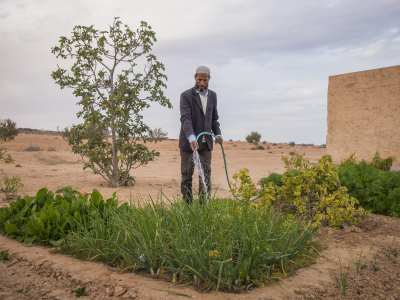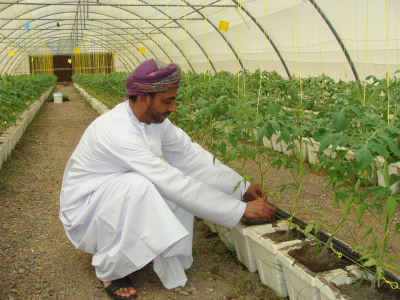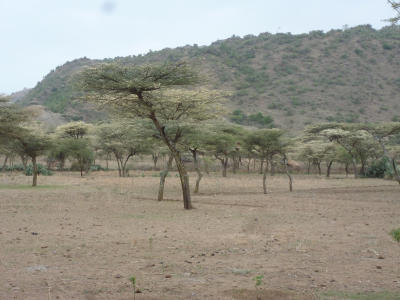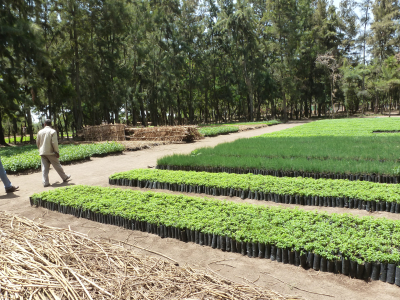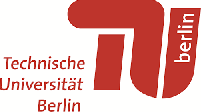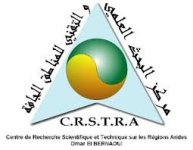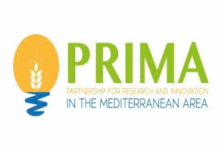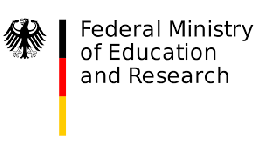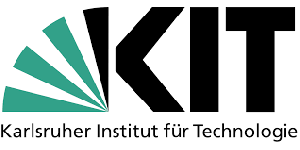Improving on-farm water use efficiency: In many parts of the MENA region, the situation today is characterised in fading ground water resources and increasing salinity of the water. In a situation, where water availability goes down, in some places towards zero, it will not be sufficient to provide practices of lowered water consumption by means of reduction of water losses (drip irrigation, hydroponics etc.) or breeding of drought resistant crops in order to maintain the existing productivity. Also, the common approach of water saving does not provide an interesting perspective for further growth and economic prosperity at the given situation. The concept of closed greenhouse systems with air dehumidification and combined water condensation in a day/night cycle shall provide a water recovery of ~80% of irrigation water by condensation. The system has already been proven within precursor projects at this level of performance but has not been developed up to market level until now. This means that the perspective of closed loop greenhouses is real! The long-term perspective is to increase the total area of land for agricultural production by providing production systems based on brackish water, pre-treated waste water (within non-food cultivations), collected rain water (and even seawater).
2. Maintaining crop productivity, quality and safety, and soil fertility: The system not only provides a high level of water savings, but also opens the perspective to safely use lower water qualities, e s p eci al l y water with higher nutrient content and a higher salt content of the input water. Lower total salt input also allows for salt sinks within the crop material and within the substrates, that can be properly regenerated.
3. Demonstration of irrigation scheduling models and tools: The proposed system will establish a new irrigation schedule qualified for (1) blending external and internal water sources, thus reducing total need of external water by factor of 5 and allowing for increased salinity by factor of up to 4, while (2) allowing for use of pre-treated waste water containing biological/sustainable sources of crop nutrients within non-food crop greenhouses (20% share of total farm surface), producing ondensed water, qualified to be used as external water source in food greenhouses (80% of surface). (3) Besides (ifavailable), sea water can be included as external water source by evaporation pads without direct contact to the irrigation system but allowing for at least 5 % increased condensation yields. The schedules may be realised by including different storage containers for external and internal water sources, liquid fertilizers and mixing devices based on control soft/hardware and dosing pumps.
4. To reduce contamination of aquifers, mainly by nitrates, thanks to the improved fertigation scheduling protocols: Nitrate contamination to soil and ground water will be reduced by means of the closed, zero outflow irrigation water cycle with matter sinks in non-food crops and substrates. Improper disposal of waste water is a further source of contamination, that may essentially be reduced by the non- food crop greenhouse approach. Nitrate reduction in waste water treatment is an elaborate and costly method, while it is a source of fertilisation in irrigation. The project shall demonstrate the possibility of nitrate recycling by non-food crops at least within a test during one vegetation period. The long-term impact will contribute to a more sustainable solution for salinity reduction and reduced pollution in treatment systems with nutrient recycling and re-use based on integrated non-food crop production.
5. Upscaling the on-farm water use efficiency gain to the irrigation district level: Within three regions with prototypical character (coastal area crop production mainly based on ground water sources, hinterland area crop production mainly based on surface water and urban horticulturewith waste water recycling and pre-selection of grey-water). Feasibility of the system and integration in the current production process will be highlighted. In a long-term perspective, the regions shall be used for step-wise realisation and implementation of the new system within a 10-year process, in which the system will be demonstrated and further disseminated to stakeholders from other regions in the MENA region and beyond.
